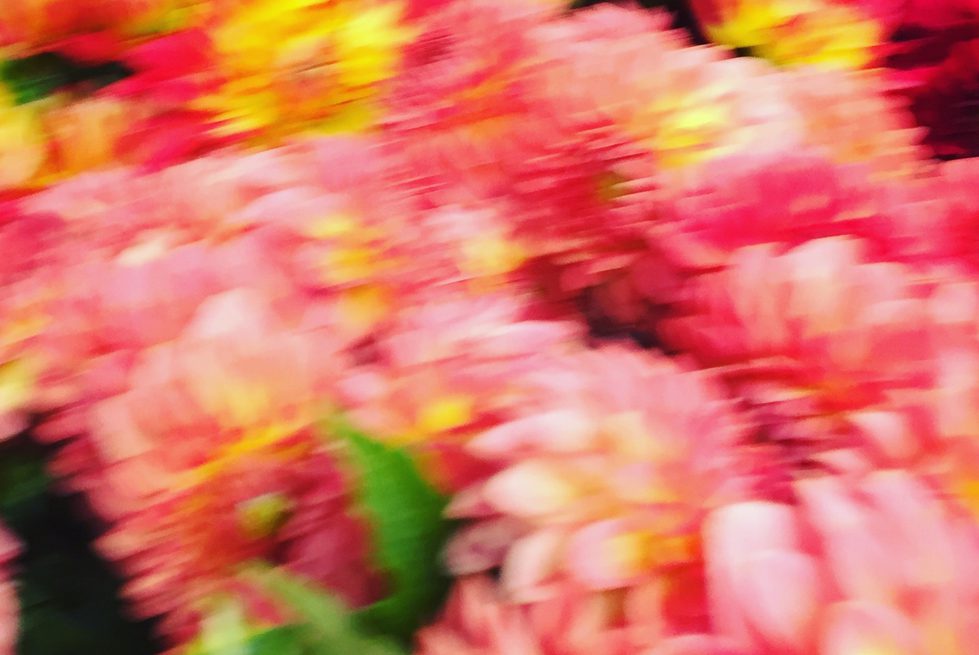Becoming Here
From the Series: Images
From the Series: Images

In Stephanie Spray’s short film Record, images are channels between there and here. Images arise from the space of life. It is in this space, as well, that they will be recorded, in and among the things they capture. But images can indeed go elsewhere, as Seti, Stephanie’s Nepali interlocutor, knows well. They confound the integrity of what is here, for here itself is there as well—over there, quite concretely, on the body of that camera. Here also always seems to lead elsewhere, in the images of imagination that these two women think and live with. The image of the hens at home. The image of a fried egg that could have been. The image of an editing table where this video will be laid and cut. In the midst of all these fleeting forms, what is truly here or not? Or where, indeed, are we? “I can see the real you there,” Seti tells Stephanie, marveling. And what we too enter, through the luminous span of this encounter, is a relentless trading of place and form. “The cinematograph,” as Jean Epstein (2014, 8) wrote, “holds the power of universal transmutation.”
In The Intelligence of a Machine, first published in 1946, Epstein approached cinema as a machine to make thoughts as well as art. Because of its creative work with speed and movement, time and space, cinema made possible a more fluid and conditional thinking. What looked inert could be shown to move; what seemed animate and intelligent could be reduced to an impassive thing. From here to there, or there to here? With such images, Epstein wrote (2014, 8), “a deep unison circulates between origin and finality and cause and effect as they exchange roles, substantially indifferent to their function.” They presented a reality that was artifactual, fictive, and experimental, open and fluid by nature, “a flight of matter running, ungraspable, from form to form.” Picture this flight, a no doubt elusive idea. Best that I try to show and not just tell you.
What happens when we slip into an idea, letting it wash and ripple through our thoughts? At stake here is a relationship between idea and image. “When we talk about trees, colors, snow, and flowers,” Friedrich Nietzsche (1911, 178) wrote, “we believe we know something about the things themselves, and yet we only possess metaphors of the things,” each of which “leaps completely out of one sphere right into the midst of an entirely different one.” Metaphor, metaphora: a carrying over, here to there, there to here, one domain into another. We tend to forget this metaphorical quality of truth, Nietzsche (1911, 180) observed, its original foundation in images, its eventual reduction to “worn-out metaphors powerless to affect the senses.” Yet if we acknowledge the necessity of this impulse to art and myth and aesthetic creation—the impulse to fashion images from a world of images—then something might begin to happen to our thinking. Suddenly, here is there, there is here. The world begins to look “motley, irregular, inconsequentially incoherent, attractive, and eternally new . . . at any moment, as in a dream, everything is possible” (Nietzsche 1911, 188).
An image, then, is neither here nor there. If this liminal condition needs a name, let’s call it the there-here. To get caught up in an image is to step into the space of the there-here, a space of unsettling yet creative indeterminacy. As it happens, this is a space of crucial significance for anthropology. “What kind of gift is anthropology, anyway?” Lisa Stevenson asks. I can’t help but think about the gifts she asks us to see: the carving of a loon, the story of a childhood refuge, this scene as it returns in memory and fear. All images laden with spirit, force, and darkness. She writes as an ethnographer, through description, working through braids of image and impression. To read her words is to fall into that space of tangled roots and terror. Description is the mouth of another world hidden away in this one: “being there,” to be sure, as Clifford Geertz (1988) reminded us, but also, ineluctably, with slivers of both hope and dread, becoming here.
Epstein, Jean. 2014. The Intelligence of a Machine. Translated by Christophe Wall-Romana. Minneapolis, MN: Univocal. Originally published in 1946.
Geertz, Clifford. 1988. “Being There: Anthropology and the Scene of Writing.” In Works and Lives: The Anthropologist as Author, 1–24. Stanford, Calif.: Stanford University Press.
Nietzsche, Friedrich. 1911. “On Truth and Falsity in Their Ultramoral Sense.” In The Complete Works of Friedrich Nietzsche. Volume 2: Early Greek Philosophy, edited by Oscar Levy, 171–92. Translated by Maximilian A. Mügge. London: T. N. Foulis. Originally published in 1873.